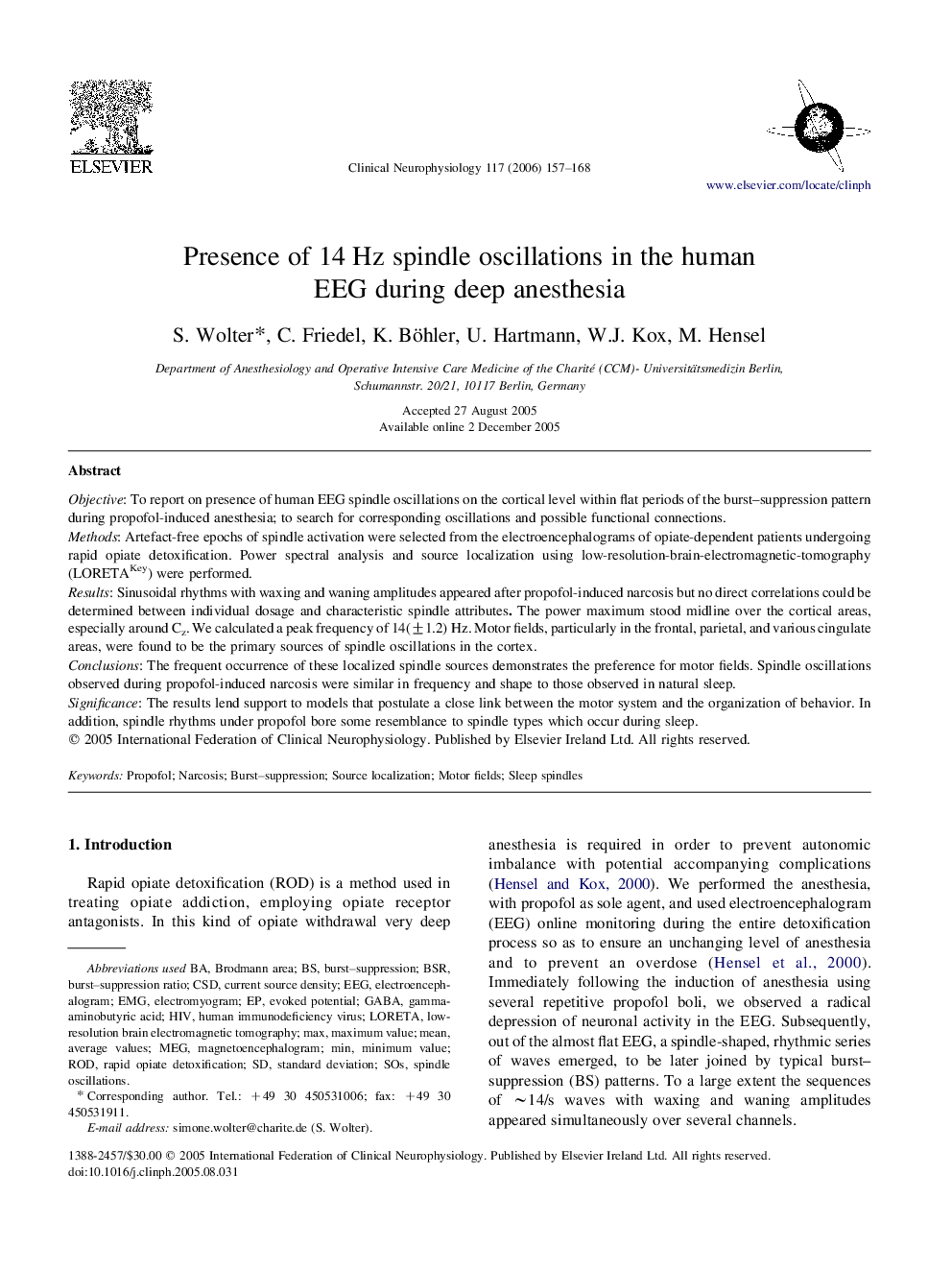| Article ID | Journal | Published Year | Pages | File Type |
|---|---|---|---|---|
| 3048077 | Clinical Neurophysiology | 2006 | 12 Pages |
ObjectiveTo report on presence of human EEG spindle oscillations on the cortical level within flat periods of the burst–suppression pattern during propofol-induced anesthesia; to search for corresponding oscillations and possible functional connections.MethodsArtefact-free epochs of spindle activation were selected from the electroencephalograms of opiate-dependent patients undergoing rapid opiate detoxification. Power spectral analysis and source localization using low-resolution-brain-electromagnetic-tomography (LORETAKey) were performed.ResultsSinusoidal rhythms with waxing and waning amplitudes appeared after propofol-induced narcosis but no direct correlations could be determined between individual dosage and characteristic spindle attributes. The power maximum stood midline over the cortical areas, especially around Cz. We calculated a peak frequency of 14(±1.2) Hz. Motor fields, particularly in the frontal, parietal, and various cingulate areas, were found to be the primary sources of spindle oscillations in the cortex.ConclusionsThe frequent occurrence of these localized spindle sources demonstrates the preference for motor fields. Spindle oscillations observed during propofol-induced narcosis were similar in frequency and shape to those observed in natural sleep.SignificanceThe results lend support to models that postulate a close link between the motor system and the organization of behavior. In addition, spindle rhythms under propofol bore some resemblance to spindle types which occur during sleep.
